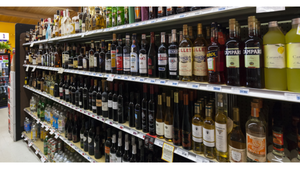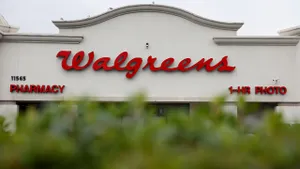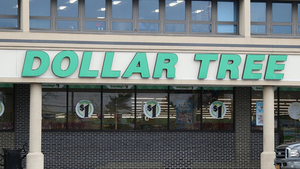Back to snack season
January 1, 2018
With kids heading back to the classroom, the industry teams up to keep offering healthy snacks. “A nation of snackers.” That is the general consensus among industry observers regarding Americans’ eating habits. Despite the abundance of recipe websites, cooking apps and celebrity chef TV shows, people are still eating more snacks on the go than they are meals at their kitchen table. At no point in the year does this ring truer than at the kick-off of the school year when family lifestyles pick up the pace and revolve around carpooling kids to school, playdates, soccer practice or ballet class. Keeping kids healthy on the go is a parent’s priority—when they are not too busy helping with homework. According to a recent study by The NPD Group, kids aged six to 12 consume 4.1 snack-oriented foods a day and 13- to 17-year-olds are snacking 3.8 times a day. The difference between these age groups, highlighted by the study, is that younger kids are more likely to eat what mom packs them while teenagers are choosing their own—less healthy—snacks. Therein lies the challenge for parents: Getting their children to bite into an apple instead of opening a bag of potato chips—in and outside of the home. This is where produce companies come in with innovative fruit and vegetables snacks and catchy marketing campaigns that target the emotional needs of kids but offer the health and nutrition that parents demand. “Adult shoppers are always thinking about the welfare of their families, searching for healthier products that contain higher nutritional values,” says Bob Borda, vice president of marketing for Grimmway Farms, based in Bakersfield, Calif. “Marketing to kids, however, requires tapping into their emotional needs. Cereal manufacturers have been very successful with influencing children to ask for their particular products in the past. We are now seeing fresh produce companies trying to appeal to children with similar marketing strategies.” One way to appeal to children is by featuring characters that capture kids’ attention. Companies like Crunch Pak, based in Cashmere, Wash., are partnering with the likes of Disney and Marvel to feature recognizable faces on their products. Others, such as Oneonta Starr Ranch Growers, are creating their own cartoon characters and point-of-sale graphics to capture kids’ attention. “When kids’ interest is piqued parents will pay attention,” says Dan Wohlford, national marketing representative for Oneonta Starr Ranch Growers, based in Wenatchee, Wash. Recognizable faces may grab kids’ hard-to-capture attention but it is not enough to hold it; it is important that kids actually like what mom and dad are buying for them. So while tailored marketing might get products into the cart, they have to taste good too. Growers are adding kid-friendly flavors to fresh fruit to sweeten the appeal. For example, the Grapple, a grape-flavored apple program from Rainer Fruit Co. and CMI, among others, which features apples that taste “more like candy,” says Suzanne Wolter, director of marketing for the Selah, Wash.-based Rainer Fruit Co. about the product. “It is a niche item and seems to be more attractive to kids as the industry tries to get them to eat healthier foods.” Crunch Pak has been targeting kids through fun flavors taste with its appropriately titled Flavorz line, on the market for a couple years now. These apple slices are infused with natural flavorings in three flavors: peach/mango, grape and strawberry vanilla cream. “They were chosen with the help of kids,” says Tony Freytag, senior vice president of sales and marketing. Brands are becoming more the norm in the once commodity-driven produce department as more companies introduce and build consumer loyalty with fresh snack options. It is going the same way as other grocery departments with synonymous associations between brands and products, say observers. Victoria Nuevo-Celeste, vice president of marketing for Sun Pacific, is seeing this happen with the Pasadena, Calif.-based company’s Cuties brand of mandarins. She says that Sun Pacific was one of the first companies to brand whole fruit. “Kids and parents love them so much that they ask retailers for them by name. It has become the name for mandarin,” she adds. The packaging stands out on the shelf, Nuevo-Celeste says, “even the stickers on the fruit—something as simple as that—play a really important role in how we market the product. It allows the consumer—moms and kids—to see the fruit as accessible and relatable.” Smaller-sized fruit like mandarins and apples are also driving sales for moms who do not want fruit to go to waste. Parents say over and over in online focus groups and social networks that they love buying fruit for their kids but do not like to waste it, says Katharine Grove, marketing manager for Wenatchee, Wash.-based CMI. The company took the feedback to heart and only put kid-sized fruit in its children’s fruit packs. This includes its 2# pouch bags for Ambrosia, KIKU and Kanzi brand of apples, in addition to the Grapple and Hero program, which was launched with positive messaging to attract hold kids interest. The driving message of the Hero program says Grove, is that “you can choose to be a hero every day, whether by helping mom and dad around the house or by exercising kindness to a perfect stranger.” Last season’s launch was accompanied by a website for kids to get ideas on how to be a hero, as well as exercise their mind and have fun at the same time with a custom hero video game. What happens in school… For parents though, it is not all about fun and games. Influencing kids snacking decisions can be easy in the home, but what happens when kids walk out the front door—especially teenagers.
According to The NPD Group, the top five snack-oriented foods consumed at school by kids aged six to 12 are fresh fruit, fruit cups/applesauce, potato chips, meal kits and yogurt. Meanwhile 13- to 17-year-olds choose gum, fresh fruit, potato chips, chocolate candy/candy bars and granola bars. A number of companies are working on connecting the messages parents send with the decisions kids make outside the home. Wholly Guacamole is attempting to create a bridge between the home and the lunchbox. The Fresherized Foods’ team, the Saginaw, Texas-based company behind the Wholly offerings, is relaunching its “One Lunch, Two Ways” campaign. The inspiration behind it is to provide families with two ways to use one group of ingredients—one is kid-oriented and one is more adult-friendly. “We really wanted to help moms come together and instead of shopping everywhere in the store, they could buy one set of ingredients for everyone to create something that they loved,” says Jennifer Sawyer, marketing manager at Fresherized. “The website has ideas and provides a shopping list. It has really helped us promote our minis.” The all-natural quality of Wholly’s classic guacamole hits on the point of health and nutrition for parents as well. “The all-natural state of our product is one of the most important elements of it; you are enjoying something that is really good for you in a convenient way,” adds Sawyer. With a foundation in health and convenience, the variety of Wholly offerings targets all party-, family- and individual-eating occasions, with a special focus on the portion-controlled 100-calorie snack packs. Another program bringing healthy snacking decisions into both the classroom and the grocery store is Fuel Up To Play 60. The program, which inspires kids to eat healthy and exercise, has the weight of the NFL behind it and receives a lot of mainstream media attention as a result. One of the produce growers involved is Chelan Fresh, based in Chelan, Wash. After a few runs in limited markets, the company is rolling the program out on a large scale by featuring small-sized apples in polybags with the Fuel Up To Play 60 theme. Mac Riggan, Chelan’s director of marketing, says that when kids go into the store with their parents and see the cartons and bags and all the logos, it is instant recognition. “They can tell mom that these are one of the Fuel Up program approved snacks,” he says, adding that there are more than 73,000 schools and 11 million kids exposed to the program. “It is really good exposure at the school level.” Dole is another fresh fruit company spreading the healthy-snacking message. The company’s advertising and social media campaigns talk about the idea that what people eat between meals is as important as breakfast, lunch and dinner. “A big part of this is the simple, but often overlooked, idea that eating fruits and vegetables can be delicious, nutritious and fun at the same time,” says Bil Goldfield, director of corporate communications for the Westlake Village, Calif.-based grower.
About the Author
You May Also Like




